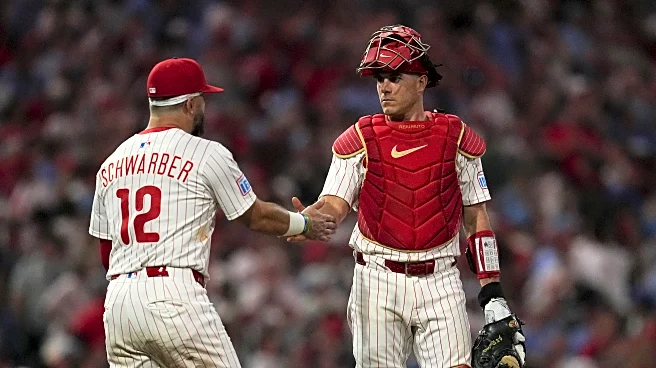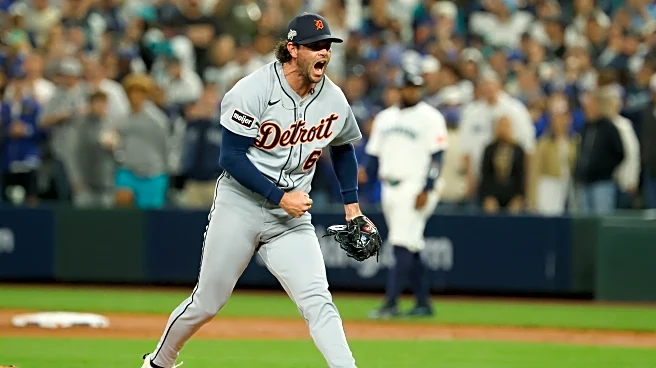Blink and you’ll miss it. Only two free agents have signed 10-figure contracts this winter, yet we’re already in projections season. Dan Syzmborski, he of the ZiPS projections, has continued his annual
tradition of releasing team-by-team projections with FanGraphs. There’s lots of great info here for those interested, including age-specific player comparisons, 20th and 80th percentile outcomes for each player, and more. He even adds a convenient infographic to summarize each team’s projected starting roster and primary depth pieces. You can find his piece here and our thoughts below.
Before diving into the projections themselves, I will provide a bit of transparency. ZiPS is the main, and usually only, projection system I rely on when I’m in the mood for projections and that almost certainly makes me biased. The main reasons for that are twofold: ZiPS is historically pretty accurate, and more importantly, Dan is extremely transparent about his process. I won’t bore you with the full details, but anyone brave enough to create a model projecting what it would look like if Manuel Margot and Archer Brookman earned full-time major league jobs, post it without filter or adjustment to the online public, and share his rationale behind each and every major decision he makes has earned my respect. It doesn’t make those projections faultless, just honest, and whether or not I agree with the number, I appreciate the ability to understand why that number is what it is. Deeper thoughts on his decision making can be found several places; I’d recommend starting here.
Now, for what the projections show and what it means for Detroit moving forward. Firstly, the team is incomplete! Team order is chosen randomly, and this year, Detroit is one of the earliest entrants. That means changes to the roster made won’t be reflected here, so think of this as a starting point rather than the finished product. That’s good and bad – it points out the obvious flaws that need addressing, but can’t say much about how well those flaws were addressed, because they haven’t been.
Offensively, ZiPS expects basically what we all expect from most of the entrenched starters: a bit above average, but not really standing out in any way. Riley Greene and Kerry Carpenter get the highest offensive projections, Justyn-Henry Malloy places unexpectedly highly with a projected 112 OPS+, right alongside Colt Keith in that regard, and oh yeah, Kevin McGonigle is projected for an OPS of .771. That’s pretty slick. It’s fairly bullish on Max Clark as well, projecting him as roughly an average hitter whenever he arrives.
The machine expects Parker Meadows and Wenceel Perez to both be a bit worse than average offensively, which is good for Meadows, who just needs to be good enough for his defense to play, and bad for Perez. Otherwise there isn’t much of note. Dan said it well: “honestly, the Tigers are a hard lineup to upgrade because they’re not actually abysmal anywhere”. Having no room for upgrades despite not being a world-beating offense is a strangely unfortunate place to be in. Finding those marginal improvements is why it’s so difficult to go from a modestly better than .500 squad to a really legit contender.
On the pitching side, again, it’s about what we expect. Tarik Skubal gets probably the highest median projection for any pitcher – Pittsburgh’s list came out already, too, and Paul Skenes is lower by a hair – which is a fantastic start to a pitching staff. From there, it’s the same as last year, but with Troy Melton instead of Jackson Jobe providing the rookie uncertainty behind Reese Olson, Jack Flaherty, and Casey Mize. This is another situation where having four decent players makes upgrading a bit harder than expected.
The bullpen, though, is a different story. Will Vest gets an excellent projection, Tyler Holton projects to bounce back, and nobody else stands out whatsoever. The most interesting story lines are, frankly, how many middle relievers this team has, and that ZiPS hasn’t bought in on the Kyle Finnegan transformation the way most fans did. That’s a case where something pretty clearly changed, which suggests the projections might be a bit behind. We’ll see how the open market views him soon. Upgrading here is pretty clearly a major need, though, especially when looking at the early projections for a bullpen like Philadelphia’s. Among contenders, it’s a bit of an arms race that Detroit is losing right now.
For a bit of fun, and also as an informative description, the projections do generate player comparisons. These are always helpful to contextualize the projection, and sometimes they really stand out in one way or another. For instance, the first name it thinks of when it sees McGonigle? Mookie Betts. Specifically 21 year old Mookie Betts. We like that. In case you didn’t know how great he is, Skubal’s three names are, well, famous enough I’ll only use their last names: Kershaw, Sale, and Koufax. Those guys were pretty good for a long time, but especially at 29. There’s more, of course, because every player in the system gets them – I don’t know who needed to know that Tim Naughton is similar to Logan Ondrusek, but now you do! – but the association game isn’t really the main focus, just a fun aside.
The main benefit to these projections is, frankly, confirmation of what we already know. Follow the Tigers long enough and you get a feel for what a player’s talents are and how much to count on them moving forward. Only McGonigle really got a notable projection in either direction. Based on ZiPS, the best Tigers team starts with McGonigle playing a pivotal role early, or signing another good bat so that they don’t necessarily need him at all. For a team that’s in some ways desperate for any advantage before Skubal’s impending free agency, maybe that’s a message worth listening to.
The full articles and projections for every player can be found right here.












